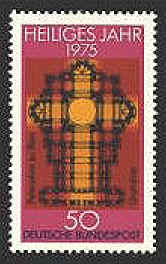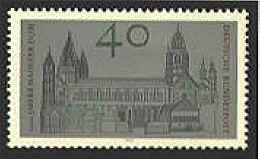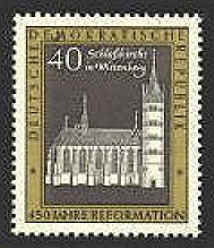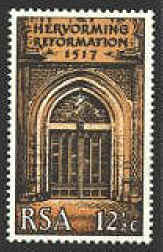|
In 1517, on the eve of All
Saintís Luther announced Ninety-five theses for debate on the subjects
of the grace of God, the means of salvation, and the efficacy of
Indulgences. According to tradition he posted them on the door of the
Castle Church in Wittenberg.
The
controversy between Luther and Rome began as a theological dispute
concerning indulgences, written documents that assured the owner of
freedom from punishment after death for sins. These had been used in
the church before to give comfort and assurance to sensitive sinners.
Now, however, they were being used as a fund raiser for the Cathedrals
of St. Peterís in Rome and the new cathedral in Mainz. Luther argued
that forgiveness was free and that the church could not ďsellĒ
forgiveness.


St. Peter's Cathedral
Mainz Cathedral
As the
dispute continued it became a debate about the authority of the church
to determine its theology and to control its theologians and teachers.
In the end the dispute broke the unity of the church, and created the
conditions for the multiplication of denominations.
In 1517, on the eve of All Saintís Luther announced
Ninety-five theses for debate on the subjects of the grace of God, the
means of salvation, and the efficacy of Indulgences. According to
tradition he posted them on the door of the Castle Church in
Wittenberg.


The Castle Church in Wittenberg
Doors of the Castle Church
In 1518 Rome demanded that Luther recant, and after a number of
meetings and writings Leo X issued Exsurge Domine, threatening him
with excommunication. After Frederick the Wise demanded that Luther be
given an opportunity to defend himself before being outlawed, he
appeared before the newly elected Emperor, Charles V at the Diet of
Worms in April 1521.

Luther before Charles V at Worms,
1521


 |
